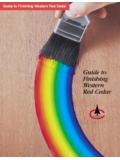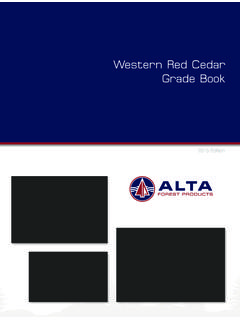Transcription of Cedar-Apple Rust - Connecticut
1 Dr. Sharon M. Douglas Department of Plant Pathology and Ecology The Connecticut Agricultural Experiment Station 123 Huntington Street, P. O. Box 1106 New Haven, CT 06504 Phone: (203) 974-8601 Fax: (203) 974-8502 Founded in 1875 Email: Putting science to work for society Website: Cedar-Apple rust Cedar-Apple rust is a distinctive disease that is indigenous and widespread throughout the Northeast in areas where apples and crabapples grow in close proximity to members of the juniper family. SYMPTOMATOLOGY AND DISEASE CYCLE: Cedar-Apple rust , caused by the fungus Gymnosporangium juniperi-virginianae, is a heteroecious rust that requires two different hosts to complete its two-year life cycle. The primary hosts are species of Malus-- apple (M. domestica) and crabapple (M. sylvestris and other Malus species).
2 The alternate hosts are members of the genus Juniperus, which includes the native Eastern red cedar (J. virginiana) as well as many ornamental junipers. The fungus must spend part of its life cycle on both hosts. The Cedar-Apple rust fungus is a Gymnosporangium rust and has a similar life cycle and is closely related to several other Gymnosporangium rusts, including cedar -hawthorn rust and cedar -quince rust . The symptoms of Cedar-Apple rust disease on Eastern red cedar and other junipers are inconspicuous during the winter and appear as brown, kidney-shaped galls that vary in size from -2 inches in diameter (Figure 1). As the temperatures begin to rise in the spring, the fungus begins to grow in the galls (Figure 2). Figure 1. Dormant Cedar-Apple rust gall overwintering on Eastern red cedar . Figure 2. Gall with telial horns beginning to emerge in early to mid-spring.
3 After periods of cool, rainy weather, the spectacular and distinctive bright orange, gelatinous spore horns develop and protrude from the surface of these galls (Figure 3). They can be up to four inches long. Heavily infected junipers appear to be decorated with many colorful galls (Figure 4). Spores called teliospores are produced in these gelatinous spore horns or tendrils. As the teliospores germinate, they produce another type of tiny spore, called a basidiospore. These spores can only infect apple and crabapple. Basidiospores are released and carried by wind and driving rain to newly emerging leaves of the alternate hosts, apple and crabapple. As many as million basidiospores may be produced in a single gall. These spores have been shown to be carried as far as six miles. Once the spores land on the emerging apple or crabapple leaves, they germinate and infect the leaves when they are wet.
4 Symptoms of infection on the apple and crabapple hosts are also quite colorful. Lesions first appear in early June as greenish-yellow spots that increase in size. They develop into characteristically brightly colored spots--the color can vary from yellowish-orange to red, depending upon the apple or crabapple cultivar (Figure 5 and 6). Symptoms are visible on both the upper and lower leaf surfaces (Figure 7). Figure 5. Symptoms on red-pigmented crabapple (upper leaf surface). Symptoms rarely develop on fruit and twigs. By mid-summer, minute spore cups called aecia develop at the edge of the lesions on the lower leaf surface. Figure 3. Spectacular, gelatinous telialhorns develop from galls after rain. Figure 4. Eastern red cedar decorated with many galls in spring. Cedar-Apple rust S. M. Douglas The Connecticut Agricultural Experiment Station ( ) 2 Figure 6.
5 Diagnostic symptoms of Cedar-Apple rust on leaves (upper leaf surface). Figure 7. Symptoms on lower surfaces ofcrabapple leaves. Aecia are visible in theselesions. The spores produced in these cups are called aeciospores. These spores are released from mid-summer into autumn. Aeciospores can only infect junipers and cannot infect other apples or crabapples. They are carried by wind and rain back to the juniper and red cedar hosts where they initiate another cycle of disease. When these spores land they germinate and stimulate the formation of galls. Galls are initially green to greenish-brown and gradually darken to brown as they age. It takes from 19-22 months to complete one life cycle of this fungus. DISEASE MANAGEMENT: Cedar-Apple rust is not considered a life-threatening disease to either type of host so control measures are usually not necessary in most cases.
6 However, if significant defoliation and/or fruit loss is experienced on apple or crabapple hosts, control measures may be necessary. This disease can be effectively managed through the combined use of culture, sanitation, resistance, and fungicide sprays. Cultural methods involve removal of either host within -1 mile from the other, although in most cases this is not feasible. Sanitation involves pruning and removing galls from the red cedar and juniper hosts during the dormant season. Once again, this is practical in limited situations where only a few trees are involved and only a few galls are present. Selection and planting of resistant cultivars or varieties is the most effective means of control since this effectively reduces or eliminates the occurrence of the disease. Examples of resistant apple cultivars include Delicious, Empire, Jonamac, McIntosh, and Paulared.
7 Resistant crabapples include Ellwangerina, Henry Kohankie, Ormiston Roy, and Red Baron. Resistant junipers are: Juniperus chinensis var. sargentii, J. communis cv. Aureospica, and J. virginiana cv. Tripartita. The final strategy for disease control involves the proper selection, timing, and application of fungicide sprays. Thorough coverage of all parts of the tree is necessary and the sprays should be applied until run-off. The fungicide label will contain Cedar-Apple rust S. M. Douglas The Connecticut Agricultural Experiment Station ( ) 3 Cedar-Apple rust S. M. Douglas The Connecticut Agricultural Experiment Station ( ) 4information on plant hosts and diseases, dosage rates, preharvest harvest interval (PHI), and safety precautions.
8 Among the fungicides registered for use in Connecticut are chlorothalonil, mancozeb, triadimefon, propiconazole, and myclobutanil are registered for use and should be applied as necessary. An organic management option is sulfur. If harvesting fruit for consumption, please consult the fact sheet Disease Control for Home apple Orchards. This guide contains information on fungicides registered for use on edible fruit. Use of fungicides to protect Juniperus species has yielded disappointing results due to the difficulty in determining the timing of the applications since this mid-summer through fall infection period remains poorly understood. One of the only fungicides registered for use on junipers in the landscape is triadimefon. May 2008 (revised)
















